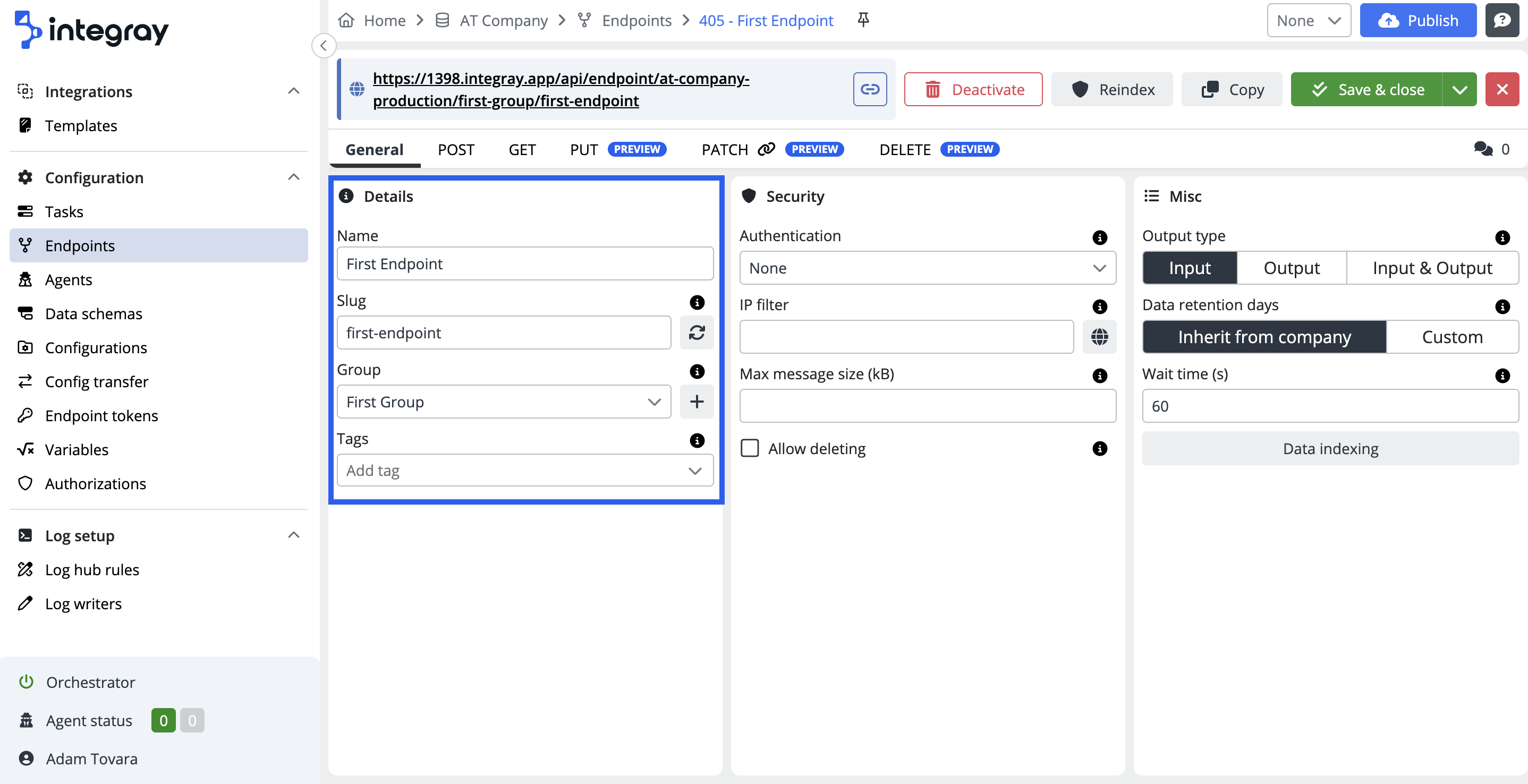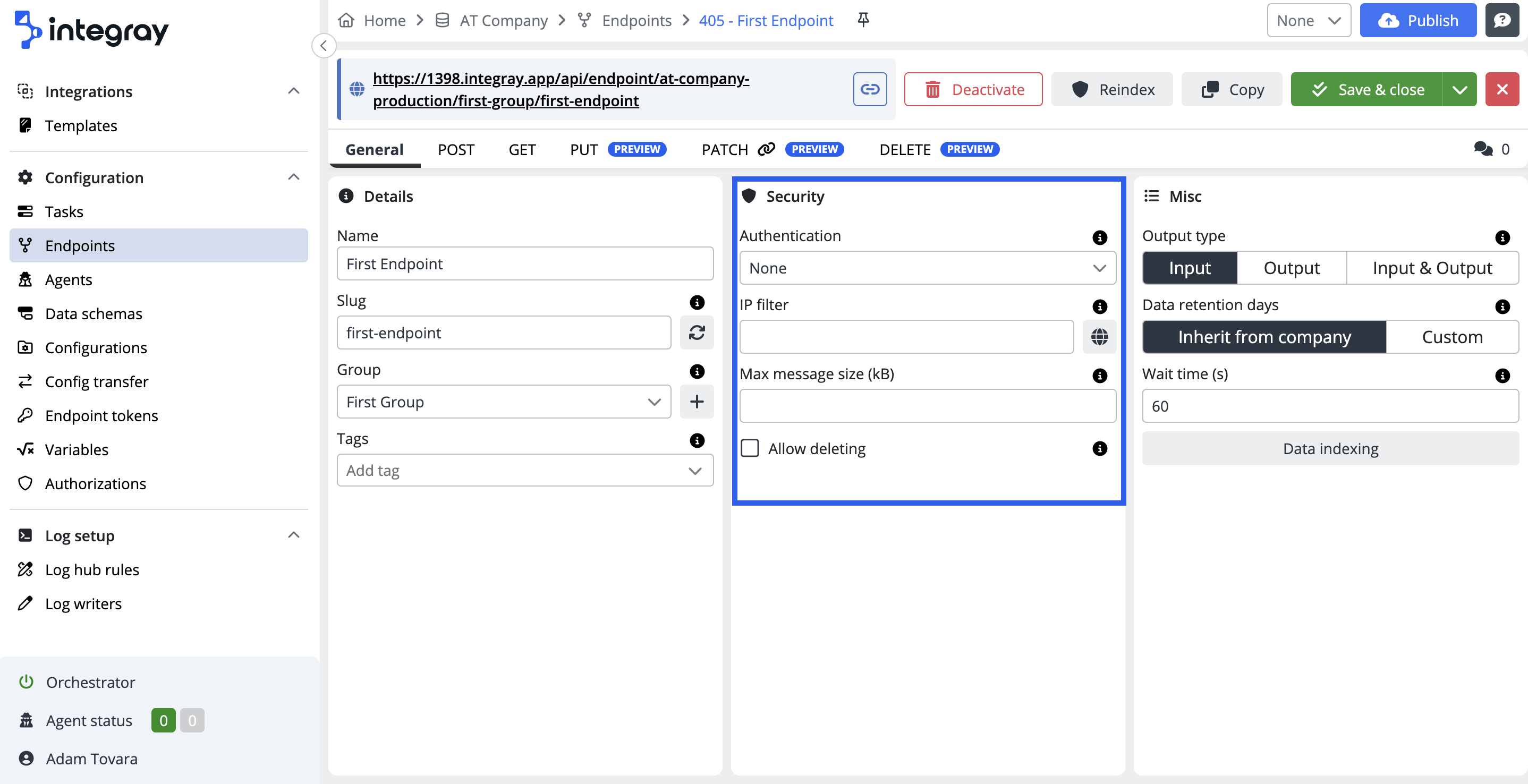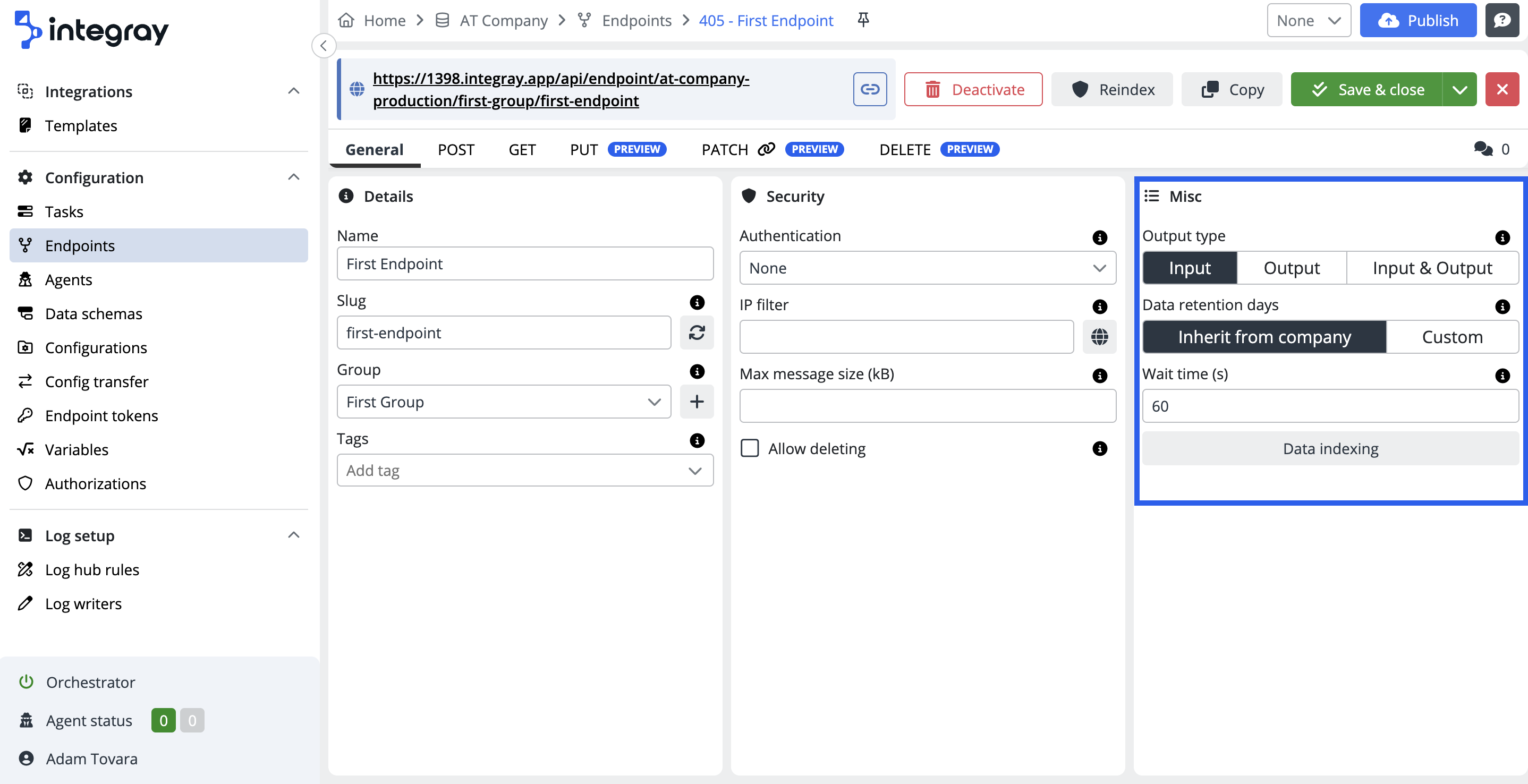General
The general tab is devided into 3 sections: Details, Security and Misc
Details
This section is mandatory and all fields here must be filled.
-
Name - The endpoint name. Under this name, the endpoint will appear in the task list.
-
Slug - The endpoint slug is the last part of the URL, under which the endpoint is available:
https://<server_url>/api/endpoint/<company_slug>/<endpoint_group_slug>/<endpoint_slug>. This is a string that conforms to the URL rules, but is descriptive and still understandable to the user. You can either create your own slug or have it safely generated from the endpoint name. The slug should contain only the charactersa-z, the digits0-9, and the symbol-. Spaces, underscores, special, and accented characters are not allowed. -
Group - The groups are used in bulk lists and filters. Therefore, place endpoints in groups so that they are thematically related. The endpoints in the same group share the endpoint_group_slug, which is the ultimate part of the URL.
https://<server_url>/api/endpoint/<endpoint_group_slug>/<endpoint_slug>
Security
This section is optional, nevertheless it is recommended to have the endpoints secured.
-
Authentication - To secure the endpoint change the setting from
None(the endpoint is freely available) toToken. The endpoint is secured by a token. Add the token to the request either as: HTTP header Authorization: Beareror query param in URL .../<endpoint_slug>?access_token=<token>.Select the
Internalif your configuration includes a Task with the Integray endpoint connector. This choice means that the endpoint is internally protected by the primary token, but the Token tab is not displayed to users. This ensures that the endpoint is accessible exclusively through the Integray service and cannot be called by other services. -
IP filter - Define IP address from where the request calls are allowed. Leave the field blank or enter
*, requests will be accepted from any IP address. To allow more addresses provide individual comma separated addresses or use the wilcard*for individual address segments, e.g.192.168.*.*.The globe button opens "Allow from list" listing all defined addresses from which the endpoint data were received. To maintain the list, it is possible to Replace current or Add to current.
-
Max messaging size (kB) - Define maximum acceptable content size of an incoming request in kB. Larger requests will be rejected with status 400 - BadRequest. If you leave the field blank, requests of any size will be accepted.
-
Allow deleting - Allows deletion of endpoint data by sending an
HTTP DELETErequest to the URL.../<endpoint_slug>/<endpoint_data_ID>.
Misc
-
Output type - Specifies what will be returned when sending an HTTP GET request to the URL
.../<endpoint_slug>/<endpoint_data_ID>:-
Input - input data will be returned, i.e. data that has been received at the endpoint
-
Output - output data will be returned, i.e. data that was produced by the bound task.
-
Input & Output - both input and output data will be returned.
-
Warning
To query the output data, select the Save output data option on the linked task. Otherwise, the output will not be saved and the response will contain only null.
Example
Sending the following request to the endpoint input:
{
"hello": "Alice"
}
The following data is the result of the linked task:
{
"hello": "Bob"
}
The endpoint will respond in the following way:
Output type: Input
{
"hello": "Alice"
}
Output type: Output
{
"hello": "Bob"
}
Output type: Input & Output
{
"Input":{
"hello": "Alice"
},
"Output":{
"hello": "Bob"
}
}
-
Data retention days - Endpoint data older than the selected period (in days) is deleted from the database.
-
Inherit from company - The value set globally on the Company is used.
-
Custom - The specific value is used regardless of the Company level settings.
-
The value 0 indicates that records are never deleted from the database.
-
Wait time (s) - Additional time added to an overall task timeout (sum of step timeouts) until the synchronous incoming REST API request times out.
-
Data indexing - The button data indexing opens a modal dialog window Edit endpoint data indexing, where you configure your data points for the selected endpoint, which will be indexed and used in the data filter in the Endpoint data viewer. You can specify it for POST, GET, PUT, PATCH and DELETE - input and output data. To specify the data points, use the
JSON pathfor PostgreSQL.
You can add one or more data points in JSONpath format. You can easily change the data point configuration at any time. Changed data points will be written into the endpoint data table and will be from that moment indexed and applied for the data filters. In case you want the historical data to be reindexed as well, you must click the Reindex button in the Endpoint header menu.
Info
Usage of the indexed data points from endpoint data is with the Endpoint data viewer, where you can use the indexed data in the available data filter.




